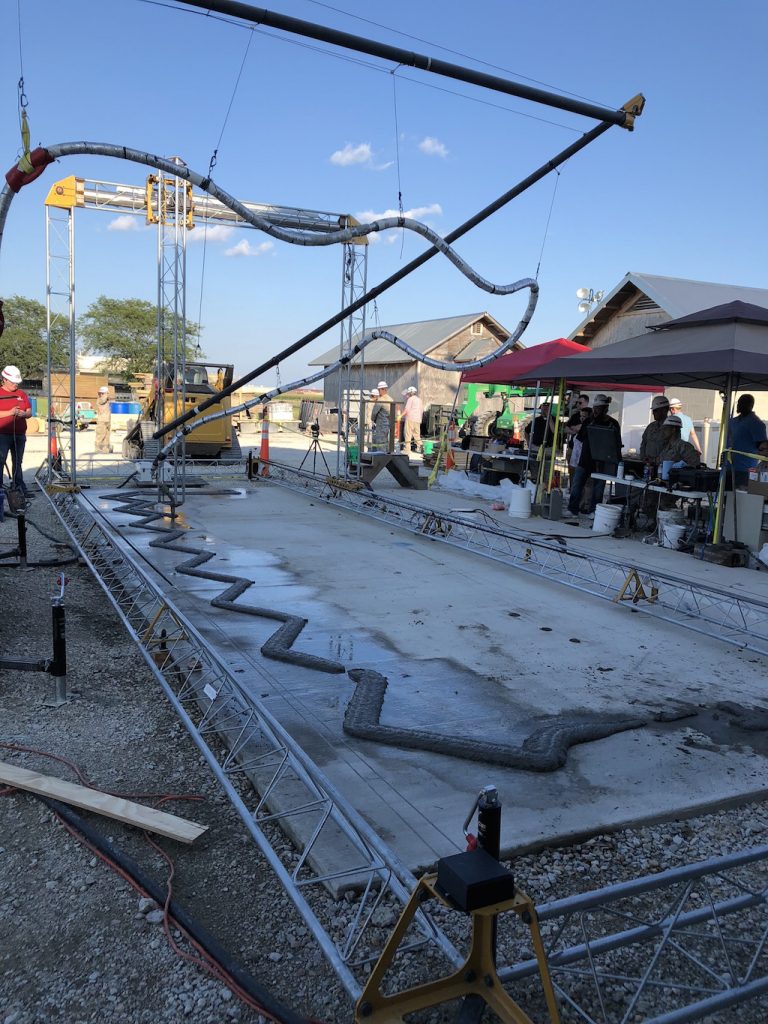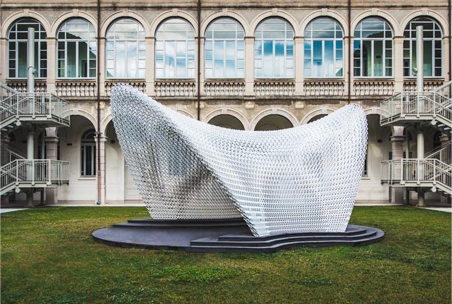We’ve all heard of 3D printing by now – from prosthetic limbs to car parts, 3D printers are creating a growing number of products, and the value of this market is set to reach $26.5 billion in 2021. But out of the vast benefits this tech offers, 3D-printed homes are perhaps one of the most significant, as they have the potential to solve many problems the architecture and construction industry face today.
They could lead to cost reduction, new designs, less pollution, and personalized objects designed by consumers themselves. 3D-printed homes could be used to shelter homeless people and perhaps even to build a base on Mars. This technology still has to overcome many challenges, though, but it will undoubtedly play a huge part in the future of architecture.
3D printing offers cost savings and personalization
3D printers construct homes by adding layer after layer of a special ‘ink’ that can be made out of a number of materials, such as concrete, fibers, and sand. After that, workers can add windows, electrical wiring, and other necessary components. The startup Apis Cor, for instance, 3D-printed a 37 m2 house in Russia for $10,000, demonstrating the many benefits of this approach. And 3D printers use cement more efficiently than conventional construction methods, helping to reduce its negative environmental impact. Moreover, as machines do most of the work, companies save money on labor.

One example is the world’s first 3D-printed office building in Dubai made by a six-meter-high, 36-meter-long, and 12-meter-wide printer. The project was completed by 17 workers in 17 days and led to cost savings of 50 per cent in labor alone, compared to similar objects built in traditional ways. Aside from this, the Yhnova housing project in France demonstrated that 3D-printed homes could cost consumers 20 per cent less money than similar, non-printed homes.

The US Military 3D Printing Barracks.
3D printing will also allow extreme personalization, since consumers will be able to create the 3D-printed home of their dreams in the future. As Jason Ballard, a co-founder of the 3D printing startup Icon, says, “You could print a house in the shape of a Fibonacci spiral if you wanted to. It’s just as simple as printing a square.”
Ambitious plans and serious challenges
The low cost of 3D-printed homes is critical for organizations such as New Story, a housing NGO, and Icon, which rely on this tech to build affordable homes around the world. Their final goal is to bring the cost of a single house to $4,000 and provide shelter for millions of homeless people. But the European Space Agency and NASA have even more ambitious plans. These organisations are researching ways to 3D print space bases on Mars and the moon, and according to the MIT researcher Steven Keating, such technology could be ready in less than 50 years.
Nonetheless, 3D printing technology has many challenges to overcome and “is still at the beginning of its development,” as noted by Dr. Thieß Petersen from the Bertelsmann Stiftung foundation. For instance, there’s the issue of the steep price of some high-end printing machines that can cost several million dollars. And even with such powerful machines, construction companies still aren’t able to build objects like skyscrapers or malls. Finally, outdated building codes and regulations in many countries make it time-consuming for 3D-printed homes to get the necessary permits, while many potential tenants even doubt the durability and safety of these buildings.
It’s easy to see 3D-printed homes as the future of architecture
3D printing technology has the potential to transform large parts of architecture and construction, as it allows companies to experiment with design and build homes in a cheap, fast, and eco-friendly way. 3D printing might one day even allow us to build bases on Mars and the moon, and it could also be used to shelter millions of homeless people across the world who can’t afford to buy their own home. The opportunities are endless, and even with all the challenges this tech faces, it’s expected that the industry will fully embrace 3D-printed homes in the future. :
International keynote speaker, trend watcher and futurist Richard van Hooijdonk offers inspiring lectures on how technology impacts the way we live, work and do business. Over 420,000 people have already attended his renowned inspiration sessions, in the Netherlands as well as abroad. He works together with RTL television and presents the weekly radio program ‘Mindshift’ on BNR news radio. Van Hooijdonk is also a guest lecturer at Nyenrode and Erasmus Universities.
Subscribe to Our Email Newsletter
Stay up-to-date on all the latest news from the 3D printing industry and receive information and offers from third party vendors.
Print Services
Upload your 3D Models and get them printed quickly and efficiently.
You May Also Like
U.S. Navy Lab Uses 3D Printing to Reduce Tooling Lead Time By Over 90%
The F-35 Lightning II Joint Program Office (JPO), responsible for life-cycle management of the key fifth-generation joint strike fighter (JSF) system used by the U.S., its allies, and its partners,...
Etsy Design Rule Change Reduces Selection of 3D Printed Goods
Online marketplace Etsy has implemented a rule change requiring all 3D printed goods on the site to be original designs. The update to the site’s Creativity Standards states, ¨Items produced using...
Honeywell Qualifies 6K Additive’s Nickel 718 for 3D Printed Aerospace & Defense Parts
6K Additive is renowned for manufacturing sustainable additive manufacturing (AM) powder, and offers a wide portfolio of premium metal and alloy powders that include titanium, copper, stainless steel, and nickel,...
MetalWorm Sells WAAM Systems to Research Institutes in Brazil and Malaysia
Turkish WAAM firm MetalWorm has sold a system in Malaysia and another in Brazil. This is an excellent example of a few emerging trends in additive. Firstly, WAAM was experimented...


































